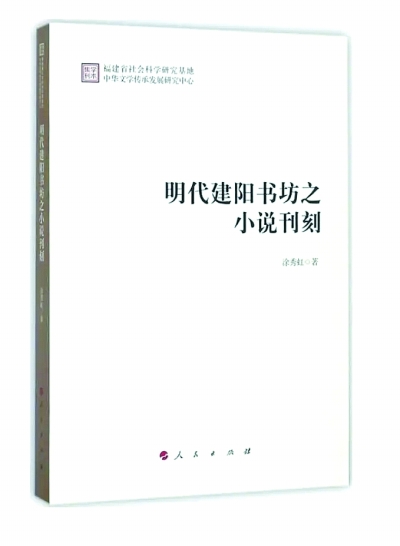Exploring Ming’s novel publishing in Jianyang

Novel Publishing of Ming Dynasty Jianyang Bookshops
As a force in the private sector, bookshops in the middle and late period of China’s feudal society produced and sold printed books to meet the needs of the market. Jianyang, a district in the city of Nanping in Fujian Province, comes across as a generally inconspicuous area. However, it was actually one of the most important national publishing centers of the Song, Yuan and Ming dynasties. Many existing Song and Yuan novels were printed here, and two-thirds of existing Ming novels were also created in the area.
In the book Novel Publishing of Ming Dynasty Jianyang Bookshops, the author Tu Hongxiu mainly discusses the reasons why Jianyang in the Ming Dynasty became the printing center of the novel, the different types of novels that the Jianyang district printed, the characteristics of these novels, and the role Jianyang played in the development of ancient Chinese novels.
The content of Novel Publishing of Ming Dynasty Jianyang Bookshops looks at the local regional culture to study the reasons for the multi-faceted features of Jianyang’s published novels. It argues that these Jianyang novels were mostly self-edited and self-printed by the bookstores, which is closely connected with this region’s popularization of education, accumulation of historical knowledge, honest and upright culture of officialdom, and folk beliefs. The unique regional culture determined the regional characteristics of Jianyang’s published novels. Themes were selected mainly based on historical stories, stories of gods and ghosts, and legal cases. These Jianyang novels played a role in conveying Confucian thought, popularizing knowledge and educating the people through vivid stories.
When studying the Jianyang novels, there is one problem that can’t be avoided. That is, some of these Jianyang books have been criticized for their rough and poor quality. The author argues that there are two main reasons for this phenomenon. One is that the poor quality is caused by the severe editing and cutting of content of original versions. The second is that the layout style of illustrations above and characters below led to images and characters both unsuitable for reading.
The author argues that the rough and poor quality of some novels was related to the clear target reader and the marketing strategy of Jianyang bookstores. The economic and cultural strengths of the area at the time determined that the target readers were ordinary people with lower cultural education and weaker consumption ability. The novels of ancient Jianyang bookshops inherited their printing tradition from the Song Dynasty, passing down and poplularizing the classics.
edited by YANG LANLAN
